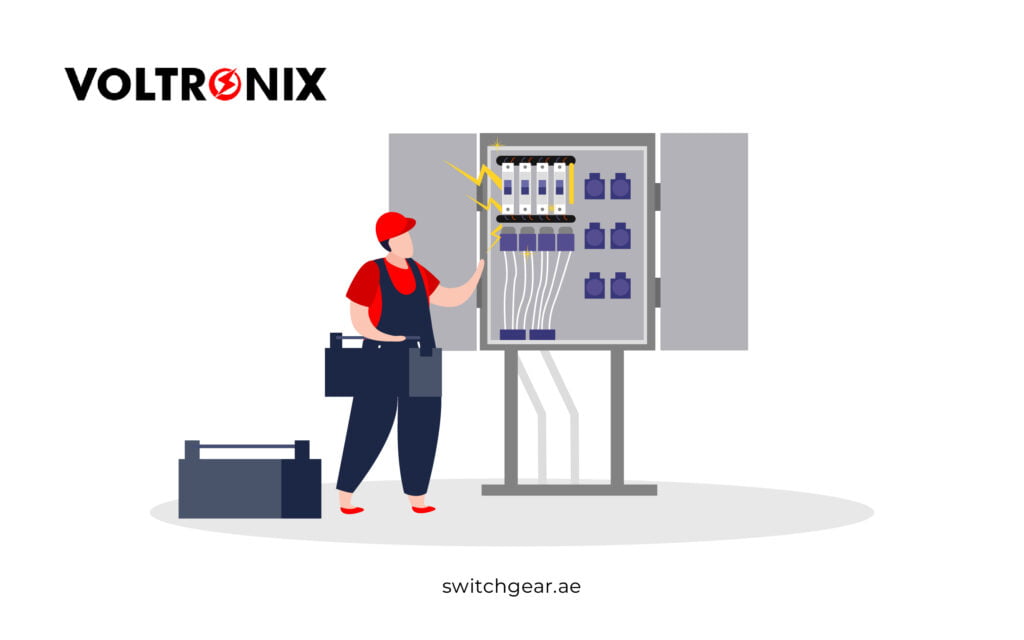An arc flash is a sudden, explosive release of electrical energy that can occur when two energized conductors come into contact with each other or when energized conductors come into contact with a grounded object. The most common cause of arc flashes is loose connections, exposed live parts, and careless work practices. To prevent arc flashes, inspecting electrical equipment regularly and following safe work practices is important.
This could generate explosions that bring a hazardous amount of light heat. Don’t think you’re safe if you aren’t the one working on the system. In addition to burning the person doing the task, an arc flash can potentially harm nearby people, including helpers and the homeowner. Also, this can result in
- Harming the electrical equipment
- Internal and external burns
- Damage to the eyes due to powerful UV light emissions.
- Lung impairment due to heated gasses or vaporized metals.
Let us gain more information on the aforementioned topic through this blog.
Arc Flash Analysis
An essential electrical safety research called arc flash analysis evaluates possible risks in electrical systems, especially in industrial and commercial settings. In order to do this, incident energy levels—a potentially dangerous electrical explosion—that might be discharged during an arc flash occurrence must be calculated and analyzed. You can visit electrical maintenance services dubai for more electrical safety service.
Measures to avoid an arc flash
As we understand the complications that could arise from the arc flash, let us now get to know how to preempt an arc flash.
1. Switch off electrical equipment when necessary
One of the approaches that could be practiced is deactivating the equipment when not in use because an arc flash can occur with live voltage. Also, it is essential to consider that a system is live; it has been confirmed as de-energized. But it is not always practicable to work on de-energized, and other safety methods should be adopted in such cases.
2. Establish the safety of operational systems
It is recommended that all electrical systems conduct a complete arc flash risk analysis. The activity could be conducted only once, but it should undergo review at least every five years. Also, reviews must be conducted whenever there are changes or updates in the system.
3. Use safety attire(PPE)
The employees must opt for PPEs when coming in contact with electrical equipment. Using rubber gloves can help safeguard against electrical arcs and resistance to heat and flames.
4. Preserve a cautious distance
The controllers are requested to keep a certain distance from high-risk zones as arc flashes could result in injuries from distances up to six meters.
5. Ensure adequate training
Proper training should be provided to comprehend the risk and prerequisites for maintaining a safe working environment. Awareness should be provided regarding risk assessment before the start of the work. This process involves recognizing dangerous points within the system and implementing appropriate working practices to mitigate their potential risk efficiently. Effective training is necessary to lower the danger since human error can contribute significantly to arc flash injuries or fatalities. Accidents involving electrical people can happen at both high and low voltages. This mainly refers to individuals who do upkeep and testing on electrical equipment, such as electricians and electrical engineers.
In order to protect the health of both people and equipment, it is crucial to prioritize safety in electrical systems and adopt best practices for arc flash prevention. In order to implement adequate safety measures, arc flash analysis is essential in identifying potential hazards and calculating incident energy levels. Companies can promote a safety culture and reduce the risks connected with arc flash events by complying with safety standards and laws. Investing proactively in preventive measures lowers the likelihood of accidents, guarantees continuous operations, and safeguards priceless assets.









